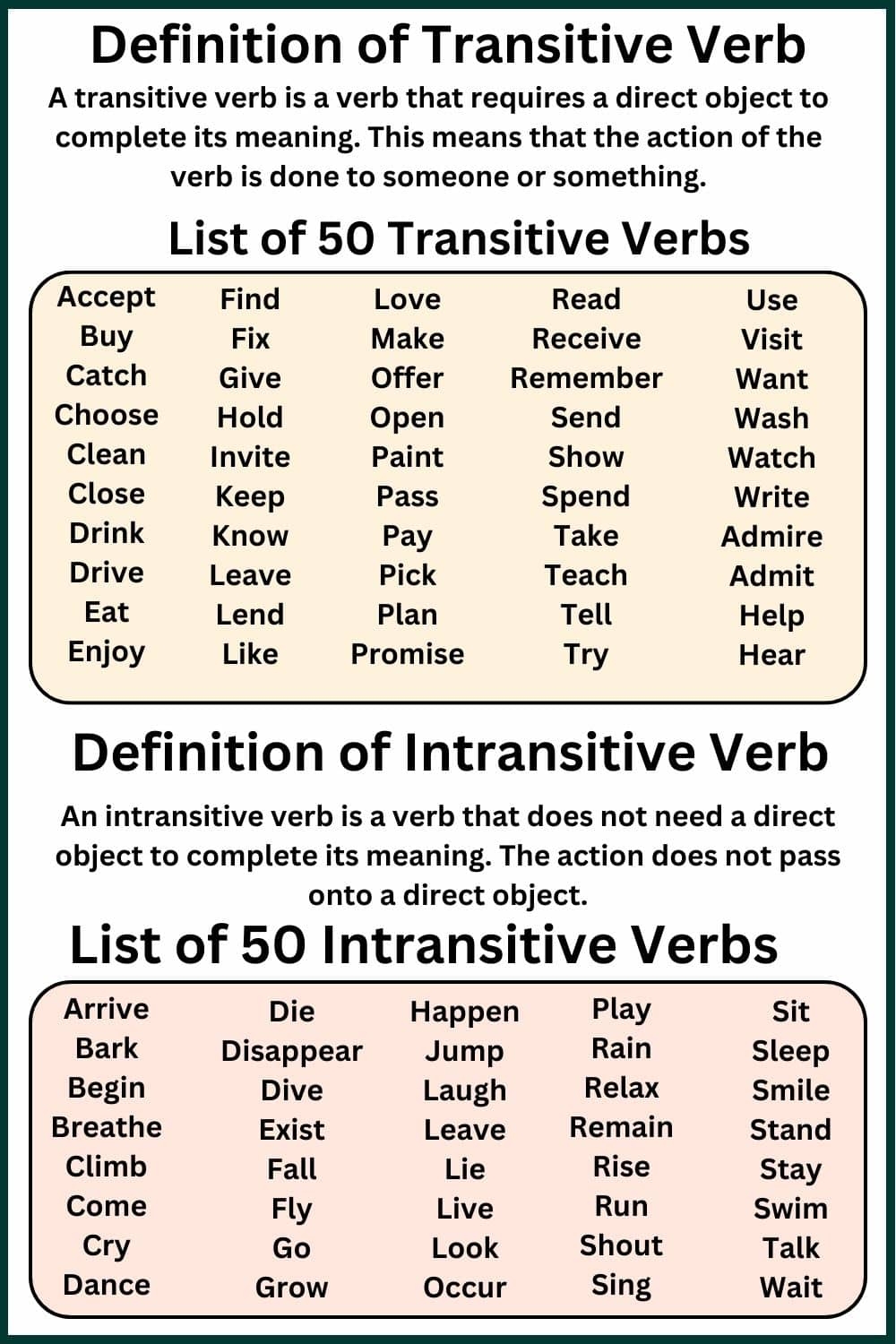Verbs play a crucial role in the English language as they convey action or state of being in a sentence. Understanding the difference between intransitive and transitive verbs is essential for constructing grammatically correct sentences. Intransitive and transitive verbs differ in terms of whether they require an object to complete their meaning.
While intransitive verbs do not require an object to complete their meaning, transitive verbs do need an object to make sense. This distinction is important for ensuring clarity and coherence in writing and communication.
Intransitive and Transitive Verbs
Intransitive verbs are action verbs that do not require a direct object to complete their meaning. These verbs express action that does not transfer to an object. For example, in the sentence “She sleeps,” the verb “sleeps” is intransitive as it does not require an object to make sense.
On the other hand, transitive verbs are action verbs that require a direct object to complete their meaning. These verbs transfer the action to the object in the sentence. For instance, in the sentence “He eats pizza,” the verb “eats” is transitive as it requires the object “pizza” to complete the action.
It is important to note that some verbs can be both transitive and intransitive depending on how they are used in a sentence. For example, the verb “run” can be transitive when followed by a direct object (e.g., “She runs a marathon”) or intransitive when used without an object (e.g., “He runs every morning”).
Understanding the difference between intransitive and transitive verbs can help writers and speakers convey their intended meaning more effectively. By using the appropriate verb form based on the presence or absence of an object, one can construct clear and concise sentences that accurately communicate the intended action or state of being.
In conclusion, intransitive and transitive verbs play distinct roles in the English language by indicating whether an object is required to complete the action. By mastering the usage of these verbs, individuals can enhance their writing and communication skills, leading to more effective and coherent expression of ideas.
